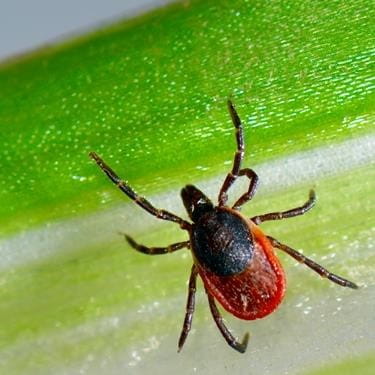Released on October 5, 2021
The Ministry of Health is reminding Saskatchewan residents to remain vigilant for ticks on themselves and pets during the fall season.
While blacklegged ticks are rare in Saskatchewan, they remain active throughout fall, particularly in tall grass, brush or wooded areas. In this province, any ticks found in the fall are likely to be blacklegged ticks, which can cause Lyme disease.
"While we certainly want everyone to get outside and enjoy the beautiful fall weather, we also want you to be smart about it," Deputy Chief Medical Health Officer Dr. Julie Kryzanowski said. "Simple precautions such as checking for ticks on yourself, as well as on children and pets, after spending time in long grass or brush will reduce your risk of a tick bite."

Other precautionary measures include:
- Wear light-coloured clothes so ticks can be seen easily.
- Wear pants, long-sleeved shirts and shoes that do not expose your feet.
- Pull socks over your pant legs to prevent ticks from crawling up your legs.
- Use insect repellents that contain DEET or Icaridin. Apply repellent to clothes as well as your skin. Always read and follow the directions.
- In Canada, clothing that has been treated with the insecticide permethrin has been approved for use by people over the age of 16.
- Shower or bathe as soon as possible after being outside to wash off loose ticks and inspect for attached ticks.
- Do "full body" tick checks after being outside on yourself, your children and your pets.
If you find a tick attached to your skin or on your pet:
- Carefully remove it with fine-tipped tweezers and grasp the mouth parts of the tick as close to the skin as possible.
- Pull slowly upward and out with a firm steady pressure.
- Be careful not to squeeze, crush or puncture the body after removal as it may contain infectious fluids.
- Do not put Vaseline, gasoline or other noxious substances on an attached tick which may cause it to regurgitate.
If you do find a tick and want to know if it is a blacklegged tick, send a photograph to www.etick.ca, Saskatchewan's image-based tick identification system.
Between January 1 and August 31, 2021, eTick received 840 valid tick submissions. Of these, only one was identified as a blacklegged tick. Most ticks found in Saskatchewan are American dog ticks. However, that species is active from mid-April to the end of July and is not capable of transmitting Lyme disease to people.
The number of ticks detected thus far this season is much lower compared to previous years. This is likely due to the cooler temperatures observed during spring and the subsequent hot, dry weather during the summer months.
For more information on ticks and Lyme disease, including how to submit a tick for Lyme disease testing, visit www.saskatchewan.ca/lyme or https://research-groups.usask.ca/ticks/#Passivesurveillance.
-30-
For more information, contact:
Health
Regina
Phone: 306-787-4083
Email: media@health.gov.sk.ca

